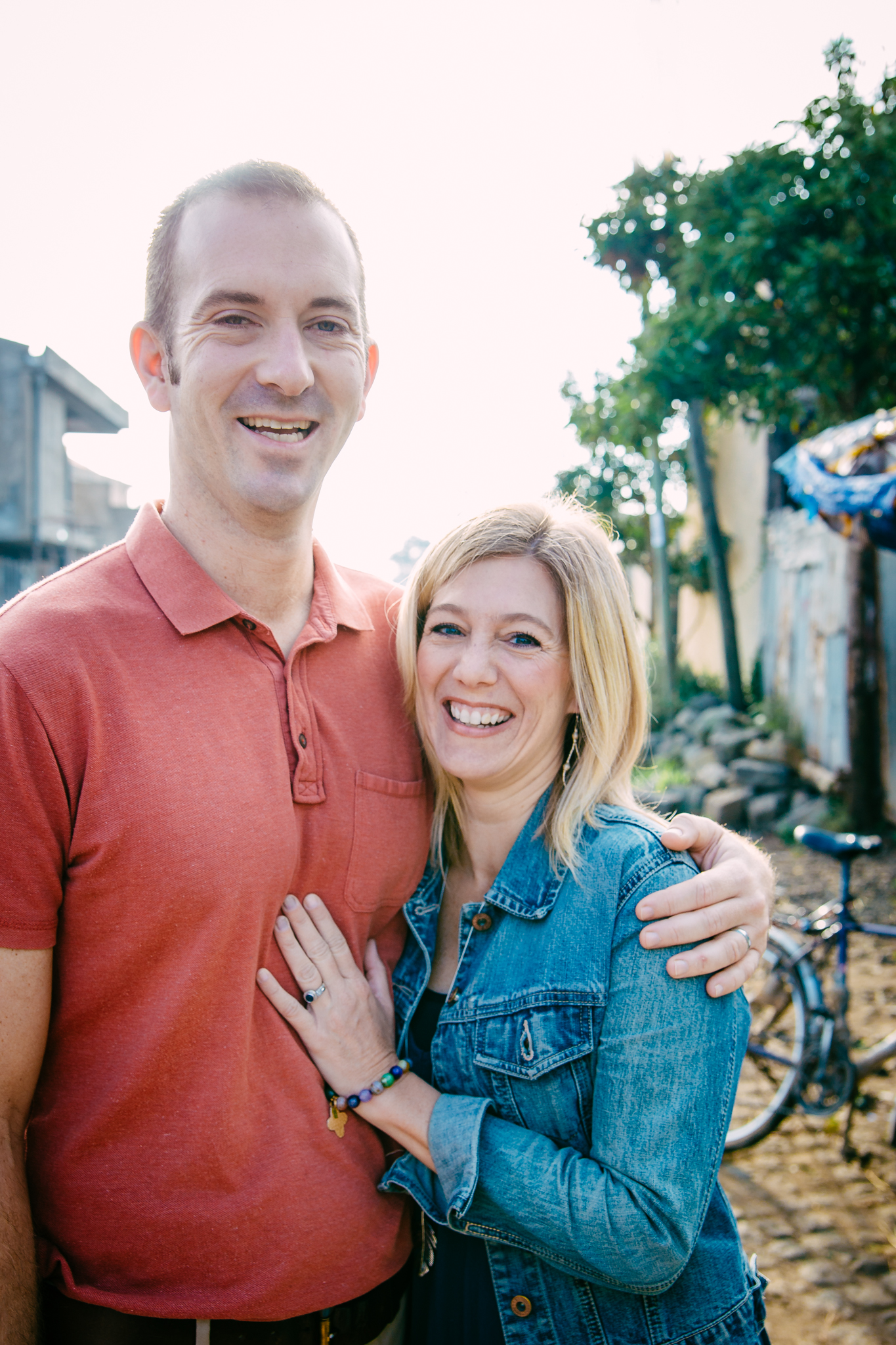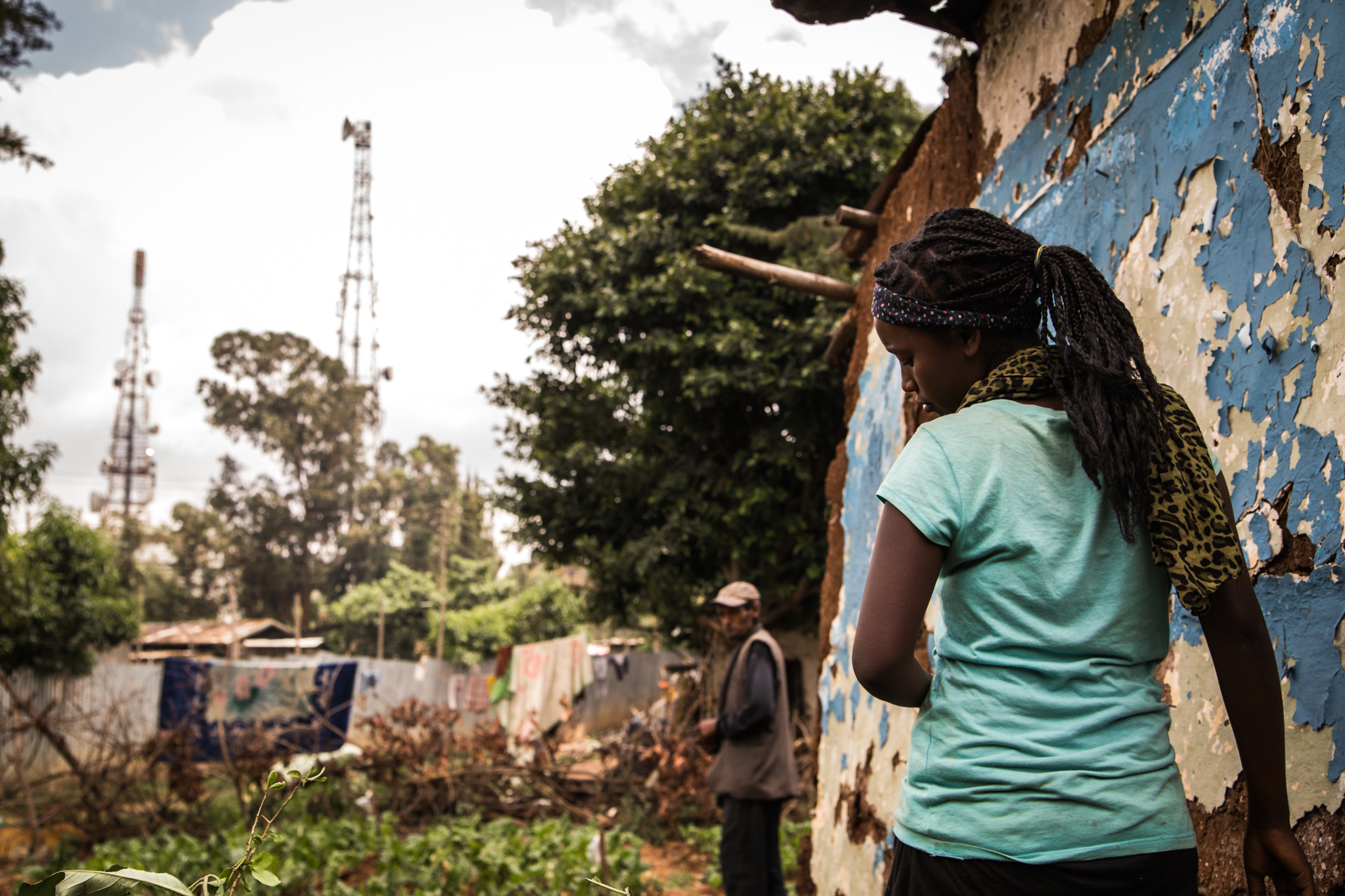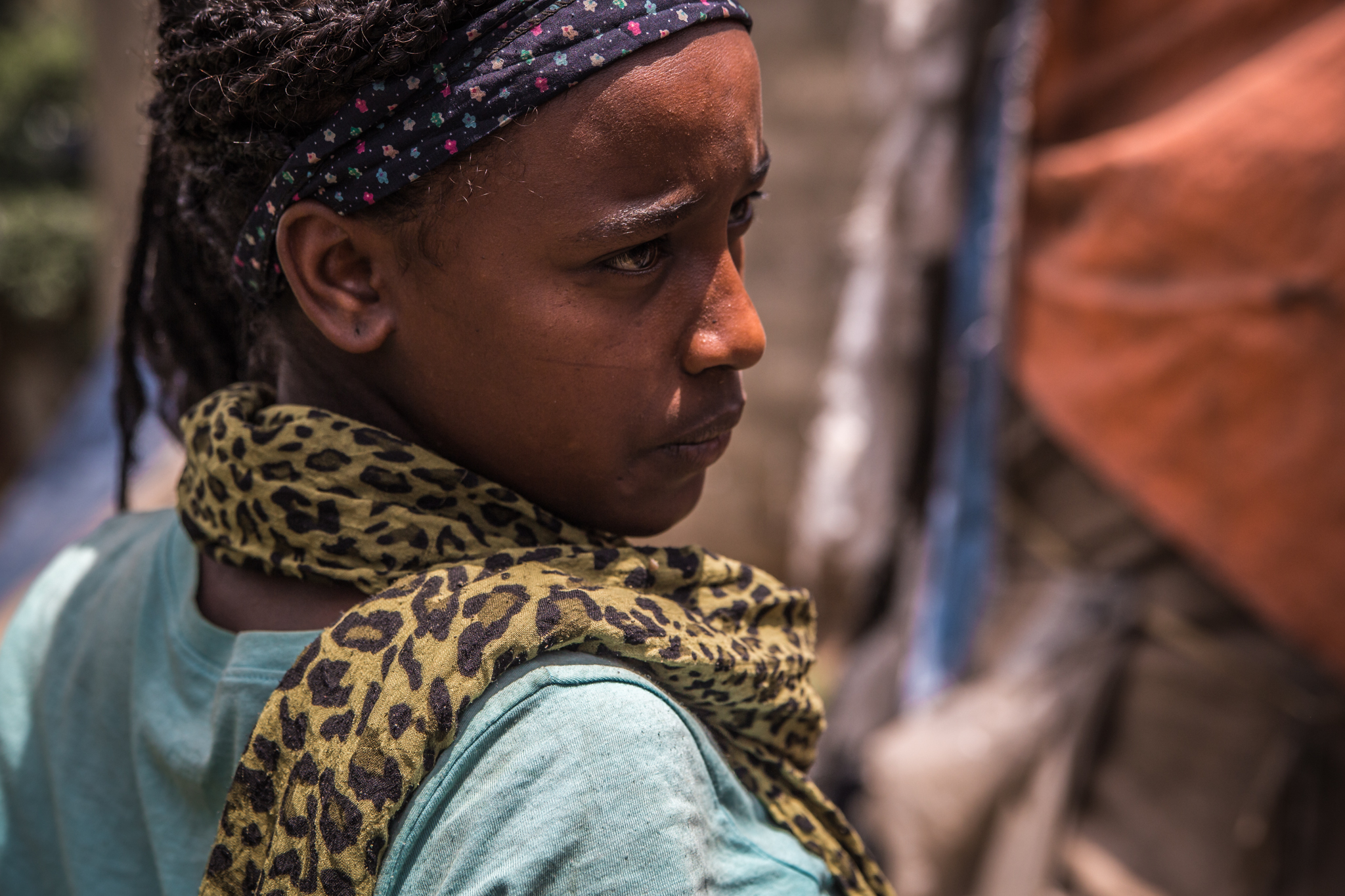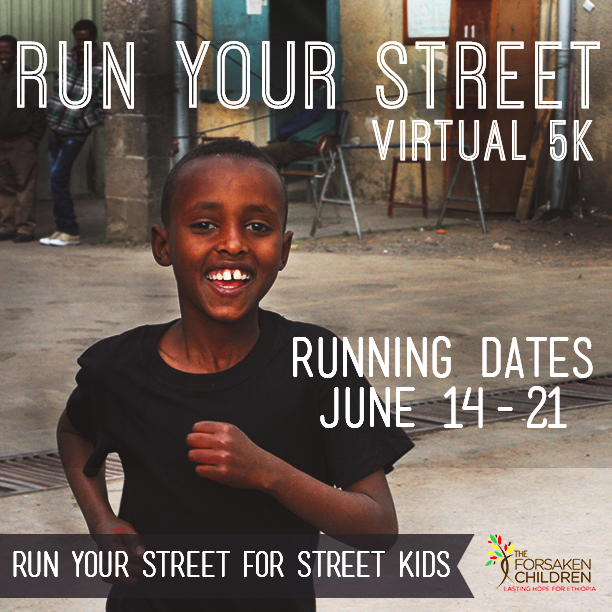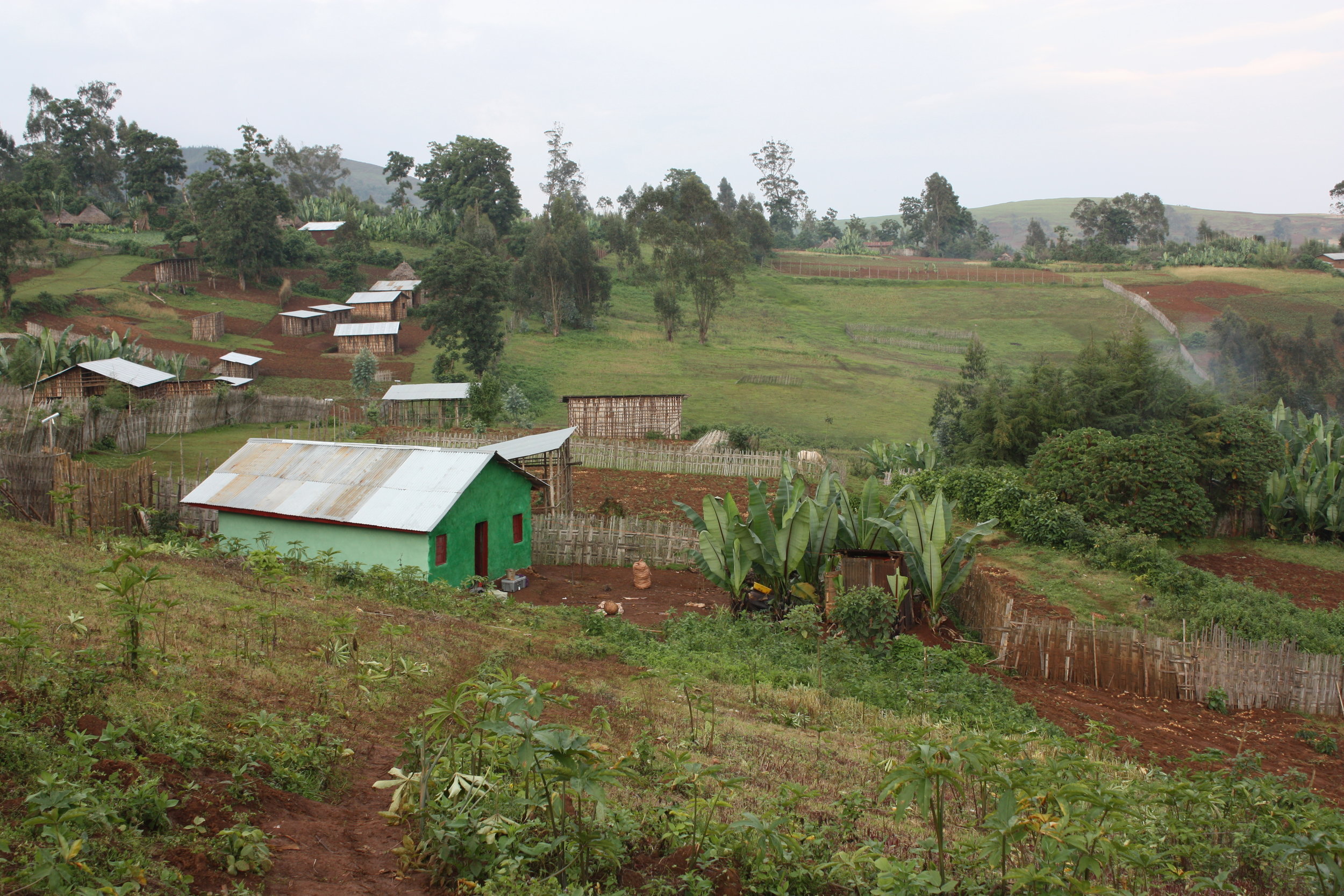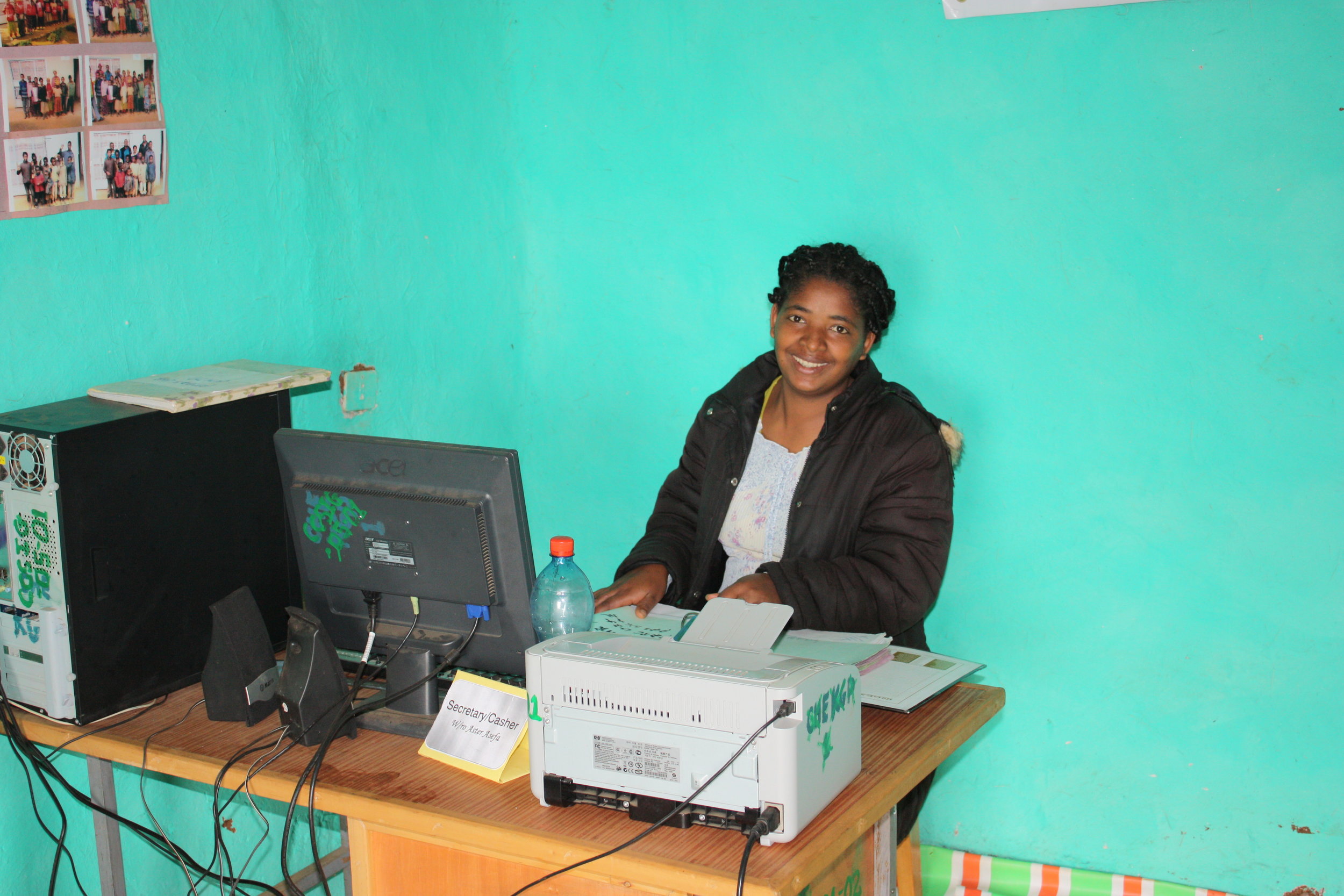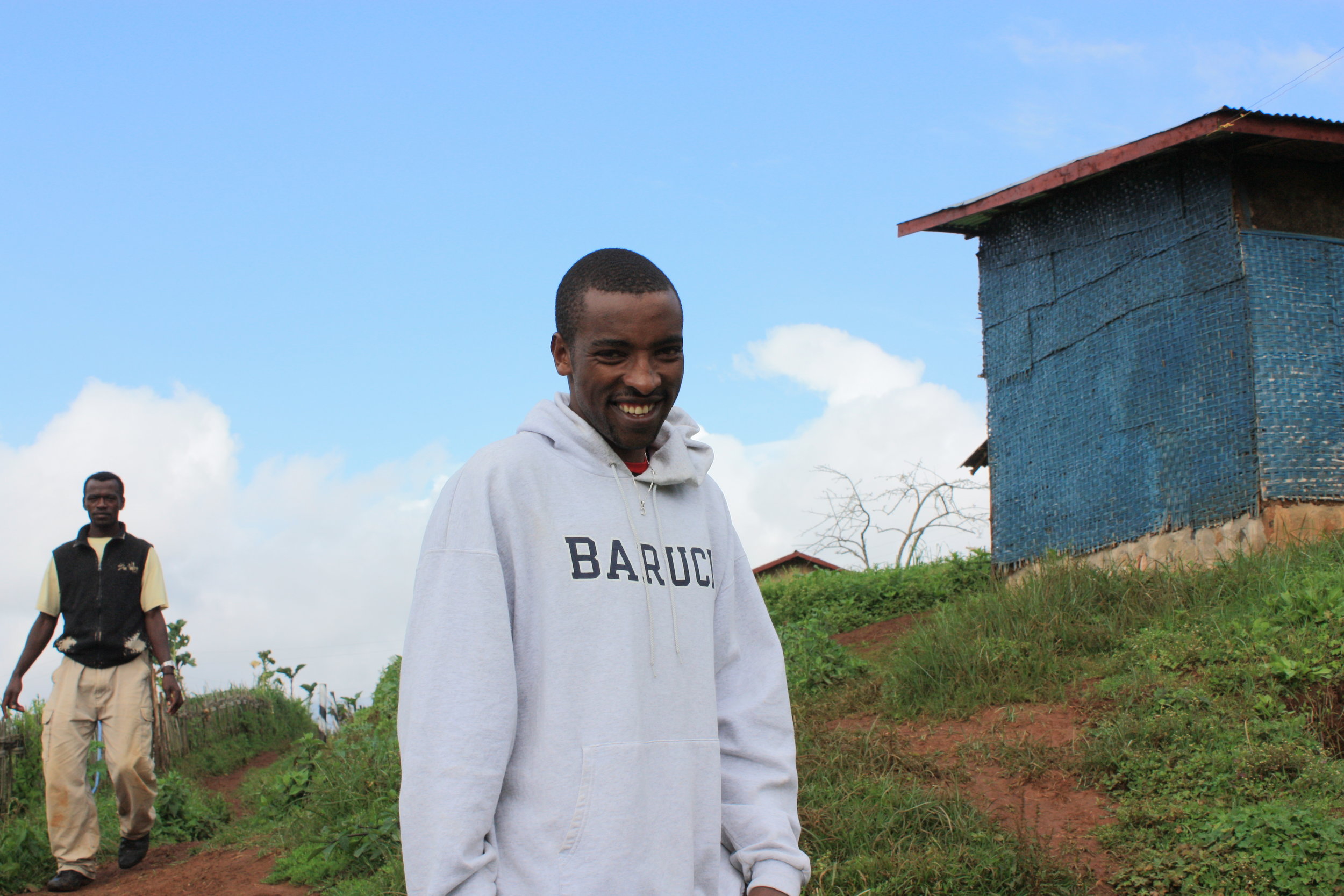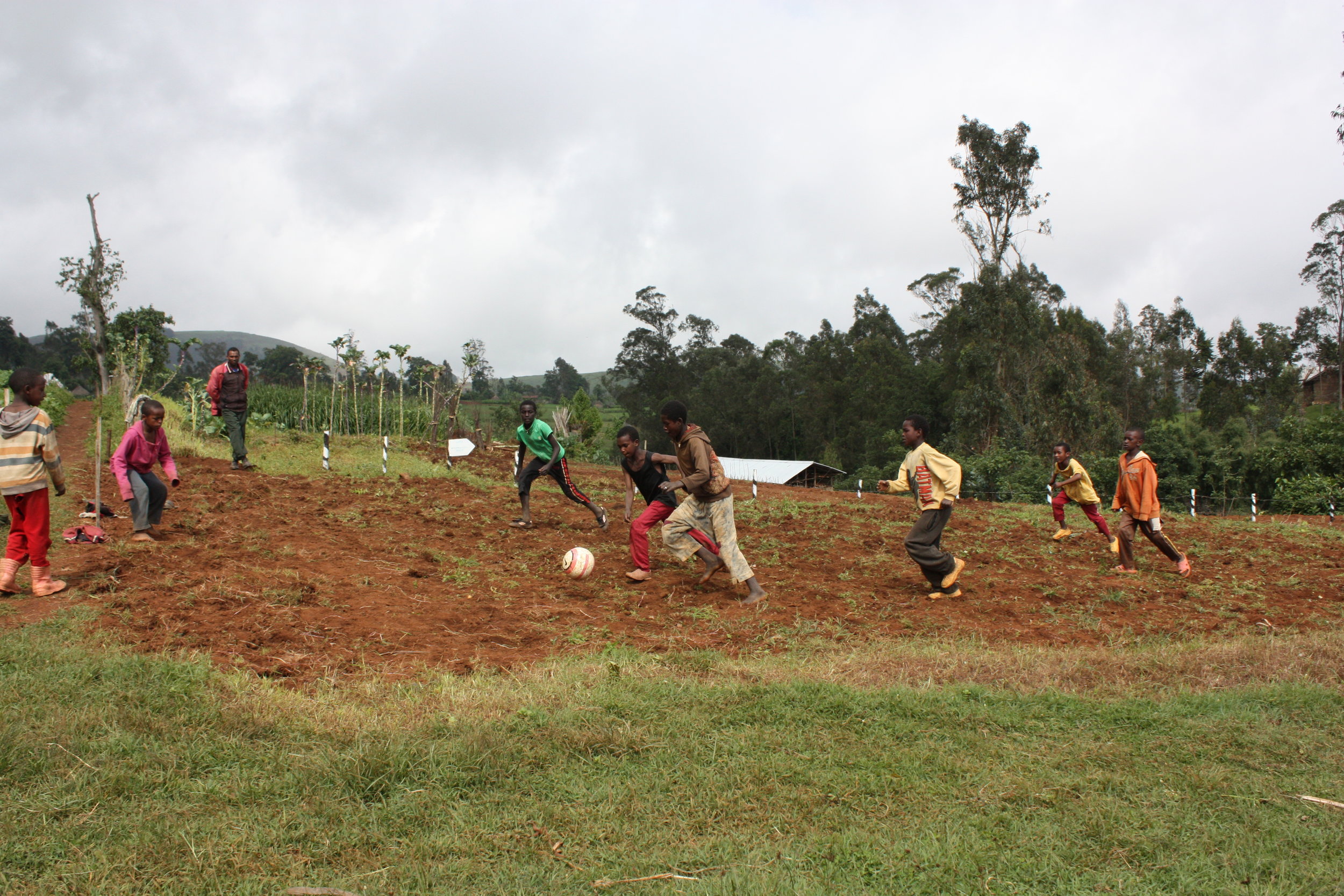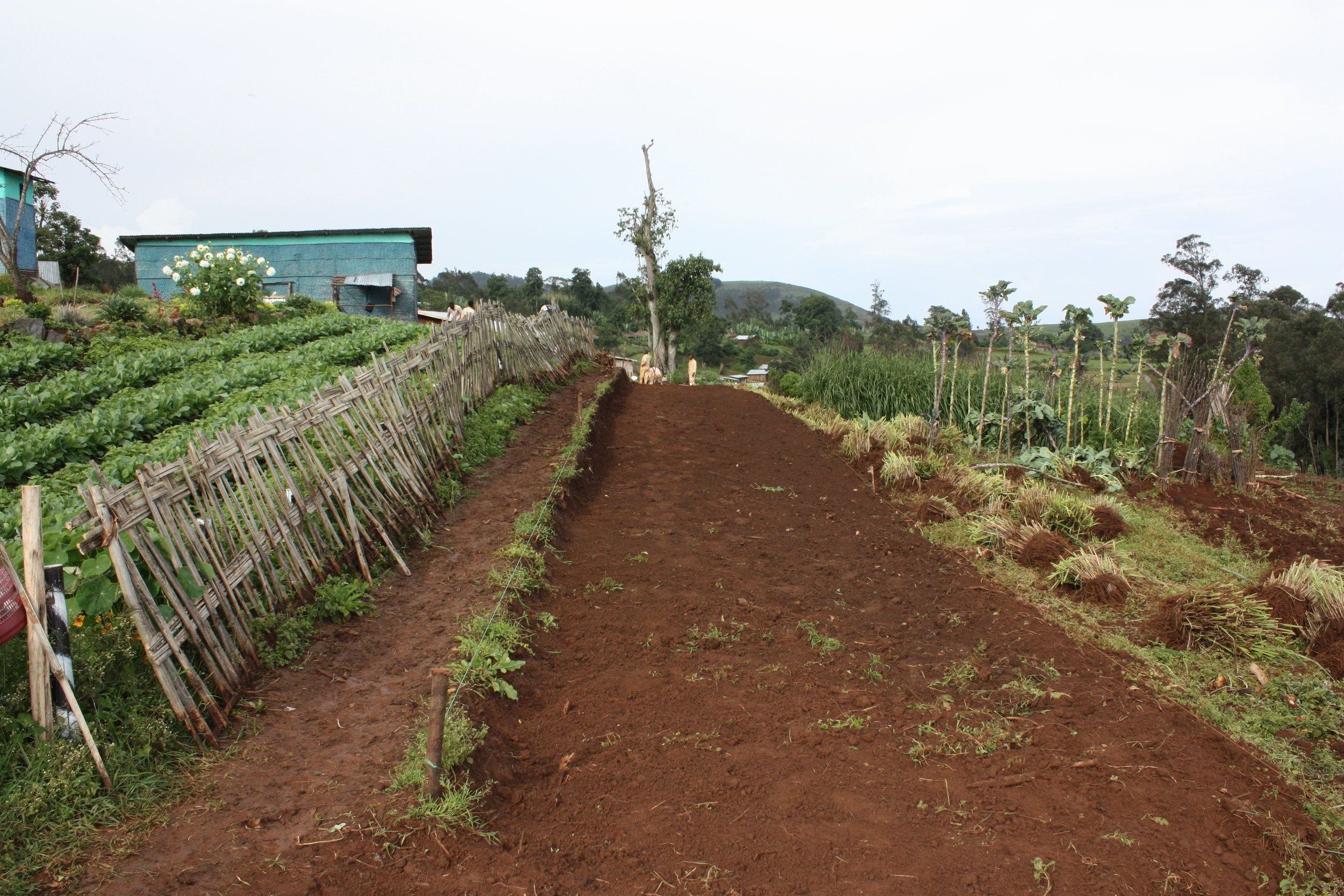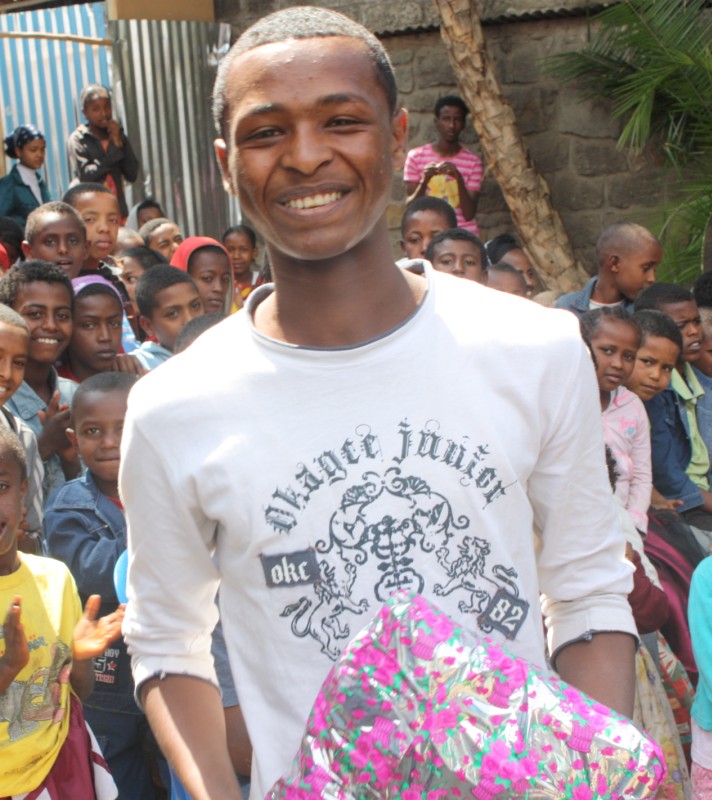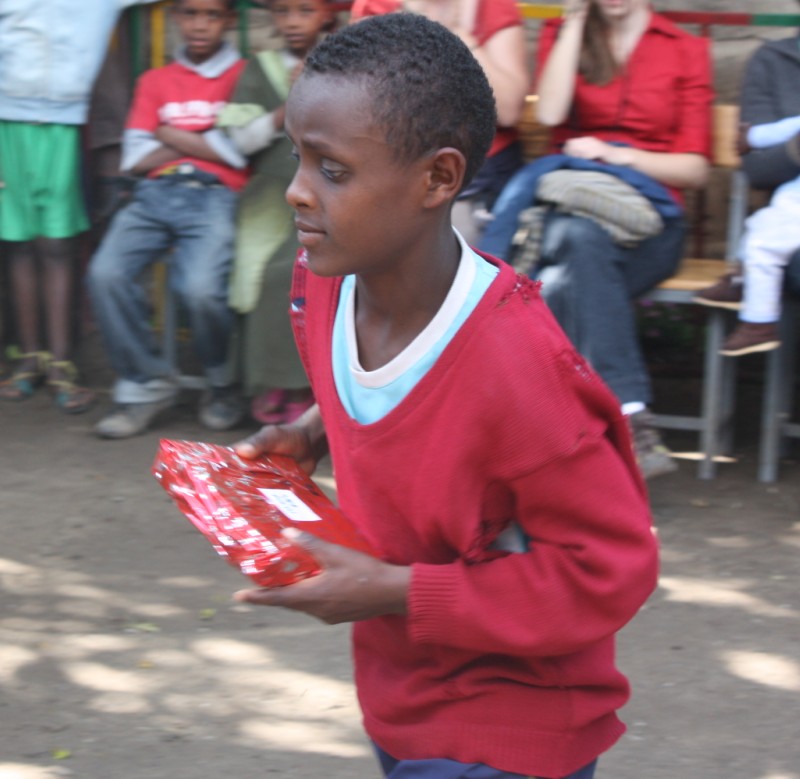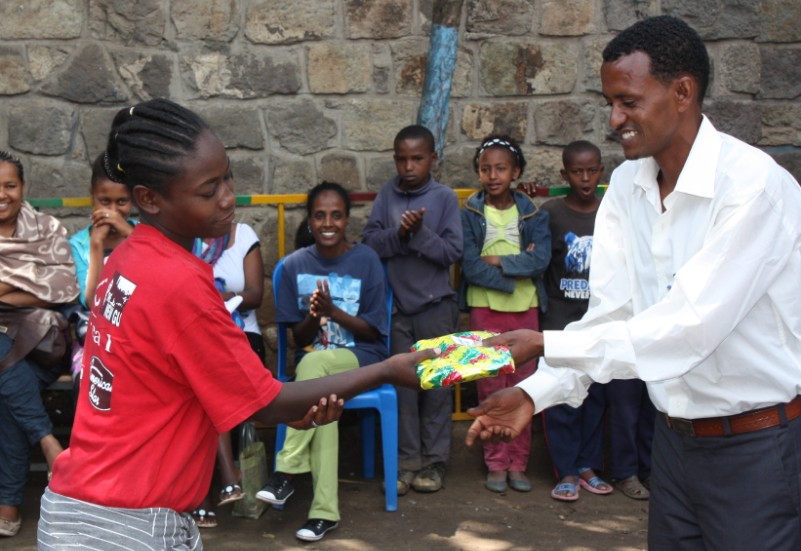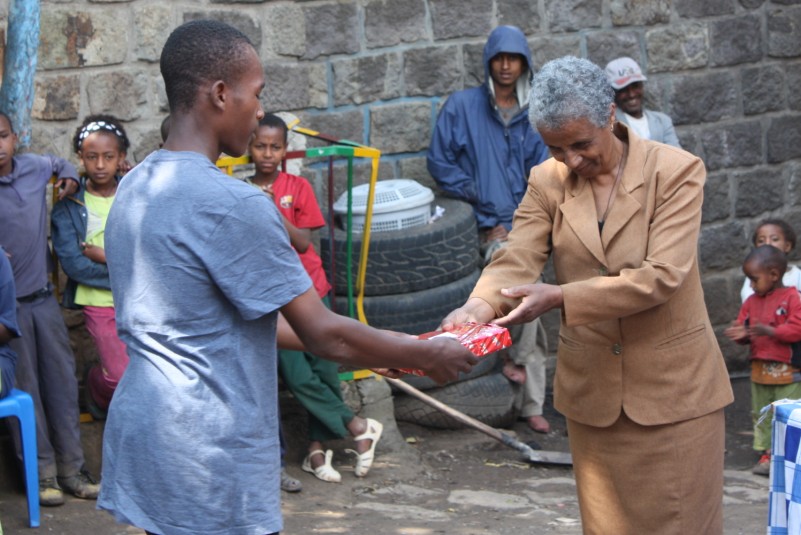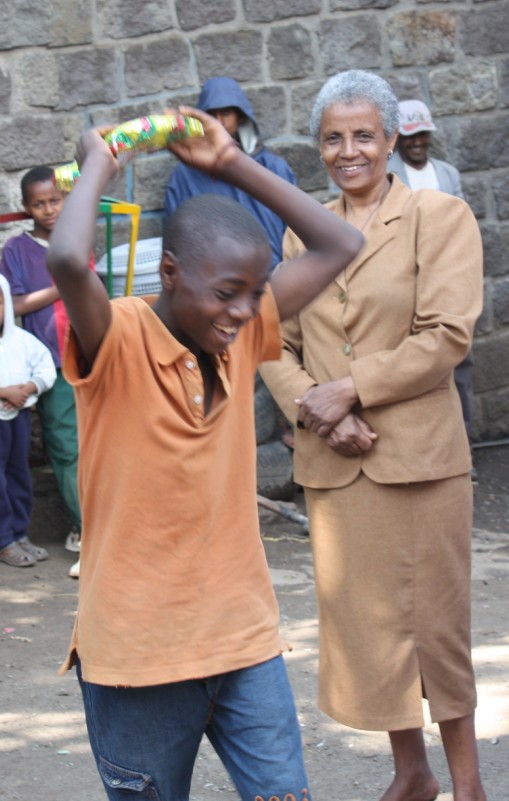A special word of hope in this new year, from The Forsaken Children's Co-Founders, Joe and Karyn Bridges...
As we start 2017, our hearts are full to overflowing!
You see, over the past 3 months we have had the privilege to RESCUE, with our wonderful Ethiopian team, 10 boys from the streets. This was the 13th group of boys to work with. Day after day we worried about those who didn’t come to the center, we did internal summersaults when a missing child returned, and we prayed that each boy would be willing to do the hard heart work necessary to GO home and STAY there in the family God intended for them.
Just this week God started the process of RESTORING these boys to their families.
I (Joe) got to go with my sweet friend, Frazier, to find his mom. Kanu, a key part of our Ethiopian team, gracefully and skillfully lead us through this process and started to REBUILD this family that, believe me, has absorbed more than its share of blows from the enemy.
Here we are at Frazier's reunification with his mother.
Now, the work continues for all of us. Frazier, and his 9 friends, need our ongoing care and encouragement this new year. We have an obligation to continue to REBUILD these families that have cracks in their foundations. Karyn and I are all in this New Year! I hope each of you are with us.
Thank you for praying with us through every hardship and every victory in 2016. Happy New Year!
-Joe & Karyn
Hope in a Plastic House
Hope does live in Ethiopia. It’s in Sara’s 1-room plastic house. This just in from our Field Director, Joe Bridges - it is an important story where we see what it looks like to help children (and their families) SURVIVE and THRIVE.
"I got to visit Sara and her mom the other day and sat in awe as her sweet mom described how she holds her precious family together in the midst of debilitating poverty.
'Where would my children go if I did not care for them? I am all they have," she explained. As I listened, I thought of the children I’ve recently come into contact with who, despite having adequate resources at home, were still on the streets. You see, street life has become a cultural phenomenon that now seems to attract some that would seem to have no reason to be on the streets (obviously reasons are there and are deeper than the catch-all, poverty, but that’s for another blog).
Sara and her younger brother Abduselum, come home every night to a home made of plastic. All their worldly posessions stuck in crevices here and there. Do you think come home for this? No - they come home for a mom who is committed to them; a mom who has been and is consistently a part of their lives. Sara, Abduselum and their mom’s hope is not found in things, but rather in each other. We can learn a lot from them."
Sara and Abduselum are beneficiaries of TFC/Onesimus. They are in school and still in their home because of the work of our Ethiopian team, and it's ongoing help. Rescue, Restore Rebuild - this process = LASTING HOPE in Ethiopia.
Chechebsah
Thank you Karyn Bridges for this great recipe! About this Recipe: Chechebsah
"If you’ve been to Ethiopia or have Ethiopian friends in your country then you’ve probably shared a meal or two. You’ve likely had lunch or dinner together and most definitely have shared a conversation over coffee. But what do Ethiopians eat for breakfast? Ethiopians eat a variety of food for breakfast including scrambled eggs full of onions, tomatoes and hot peppers, fir fir (injera pieces mixed with Berbere), pasta with sauce, bread and of course tea or coffee with sugar - among other things. However, Chechebsah, a traditional Ethiopian breakfast food, is a family favorite in our house. Rosa, a friend and former house worker for both Ethiopian Bridges’ families, taught Jessica how to prepare the dish and Jessica has since passed it on to me. It may seem a little complicated but it really is quite simple and very delicious. Give it a try and let us know how you like it."
Ingredients: 4 cups of flour 3 cups of water ½ cup of oil 1 T of Berbere ¼ to ½ cup of honey Salt A Skillet A pot
Directions: Place 4 cups of flour in a large bowl. Add 3 cups of water and mix together - lumps are okay. Heat a skillet over medium high heat. (If using a stainless or cast iron skillet then add a little oil to keep the batter from sticking. If using a non-stick skillet then there is no need for oil.)
Place approximately ½ cup of batter on the skillet and spread it into a circle. Make the batter thinner than a pancake but not as thin as a tortilla. You can use a fork or a spoon to spread the batter BUT a baking spatula works best.
Flip the “tortilla” thingies a couple of times. The batter should make about 5 – 6 “tortilla” thingies. The last “tortilla” thingy may be considerably smaller than the others. That is no problem. Just use all the batter. Tear the “tortillas” into bite sized pieces and set aside.
In large pot, heat ½ cup of oil over medium high heat for about 5 minutes. Add 1 T of Berbere (more or less depending on how spicy you prefer) to the oil. Then add ¼ to ½ cup of honey to the oil. Whisk together well and cook approximately one minute. It should be bubbly.
Then, add the “tortilla” pieces to the oil, Berbere, and honey and mix until well coated. Sprinkle with salt and mix well again. Cook until all the oil is cooked off from the bottom of the pan.
You can also dip the pieces in additional honey or yogurt for a tasty treat.
ENJOY!
To learn more about Ethiopian cooking, recipes, or food talk in general from Karyn, follow our blog.
Making Two Worlds Connect
There is very little that life in the U.S. shares in common with life in Ethiopia. This makes it difficult to prepare our family for our life once we return to Ethiopia at the end of this year. However, we may be more prepared than not… You see, I have noticed something about my wife that is so cool. She really tries hard to keep us connected with aspects of life in Ethiopia.
Karyn’s attempts are subtle, but when I look back over the past few years, I see a very clear pattern of her efforts.
Ethiopian food – this is a big one. Food in Ethiopia is vastly different from what we typically consume here in the U.S.
In fact, Ethiopian food looks so different from what we typically eat that many Americans don’t even recognize it as food at first. For example, here's a shot of Karyn's chosen birthday meal last year from our favorite Ethiopian restaurant...
 Karyn has intentionally put us in front of Ethiopian food over the past few years. From going to Ethiopian restaurants to cooking up Ethiopian dishes in our home, she is always helping to recreate that love for the food that we all shared (even our two oldest kiddos, Jack and Mac) while living in Ethiopia in 2009 and 2010.
Karyn has intentionally put us in front of Ethiopian food over the past few years. From going to Ethiopian restaurants to cooking up Ethiopian dishes in our home, she is always helping to recreate that love for the food that we all shared (even our two oldest kiddos, Jack and Mac) while living in Ethiopia in 2009 and 2010.
Click the pic to get Karyn's Spicy Ethiopian Lentils Recipe - IT'S SO GOOD!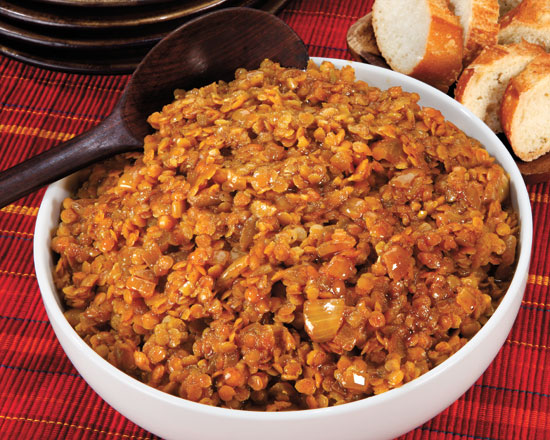
Running – If there is one thing that’s true about Karyn it is that she LOVES TO RUN. I think her fondness of running only increased after living in Ethiopia… The land of amazing runners.
Her dedication to running over the past few years has often perplexed me – I’d much rather eat some Ben and Jerry’s and watch The Biggest Looser – but I think I get it now… it’s another way she stays connected with something that is very Ethiopian.
She even gets our kids involved...
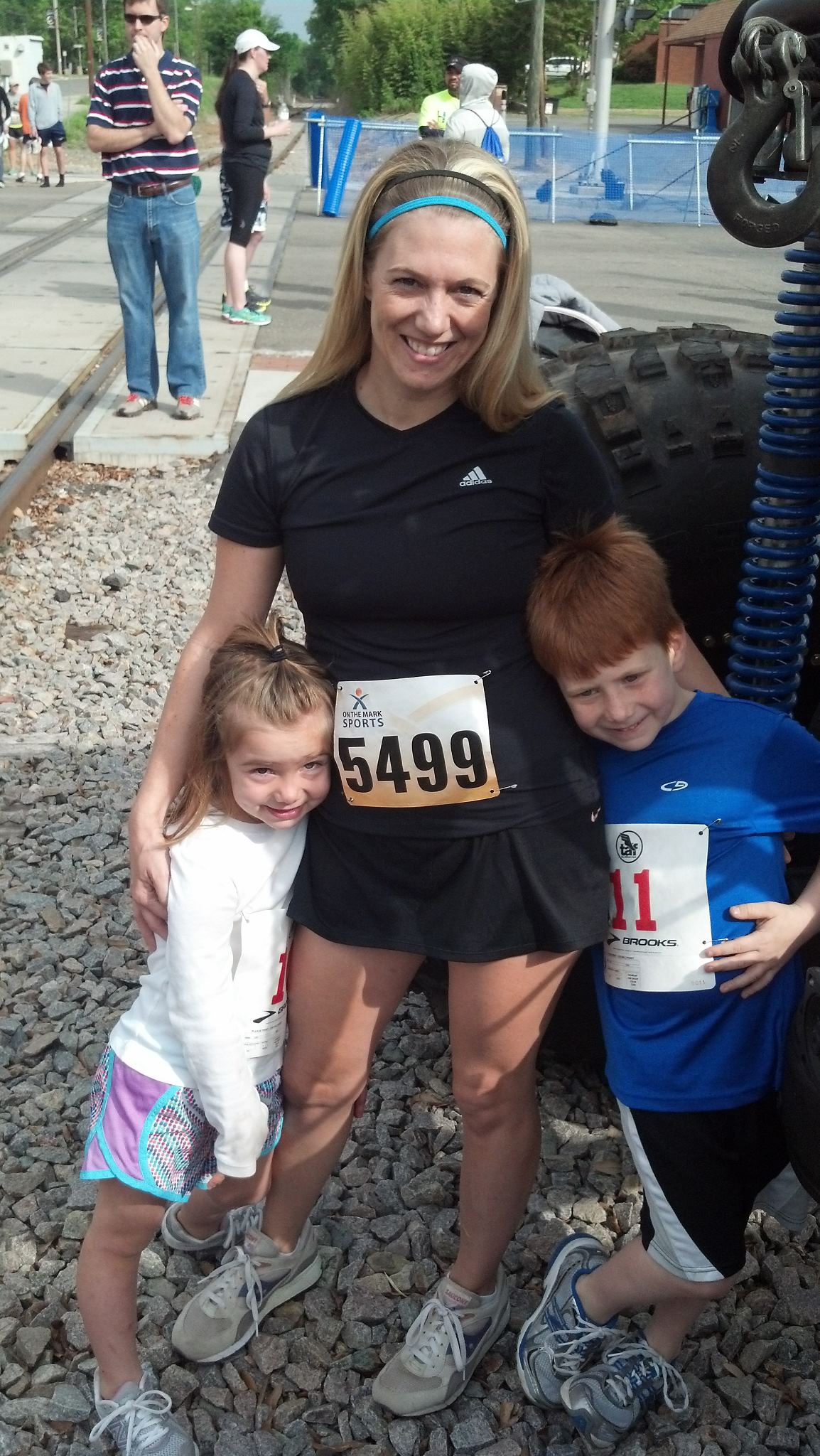
Karyn came up with the concept for the Run Your Street 5K, which takes her love for running and matches it up with an actual race that our beneficiaries participate in each June on the streets of Addis Ababa. I know she would love it if you would register to run this virtual 5K!
Hospitality – Okay, you may think you’re hospitable, but unless you’re Ethiopian, you don’t know the true meaning of that word.
Guests are the most cherished and honored people in Ethiopia.
Ethiopians love to be together, to have guests over to their homes (even if their homes are nothing more than a 1-room mud hut), to feed their guests mass quantities of food (even if they REALLY cannot eat another bite), and to sit around a coffee ceremony to enjoy each other.
Hospitality is a beautiful part of Ethiopian culture and one that doesn’t come naturally to Karyn or me. You see, Karyn does love people and even guests, but she has this ingrained sense that she MUST be prepared (clean house, meal planned, kids presentable, etc…) before guests come (I know y’all can relate).
That is so not Ethiopian!
For Ethiopians, guests are welcome no matter what. I have loved how Karyn has stretched herself to not always have to have everything in order… She does love to have a tidy house, but she continues to push into having guests over – house tidy or not.

Ready or not, here we come. Our family is set to return to Ethiopia in November where we will serve alongside the amazing men and women who rescue children from the streets everyday. I am so blessed to have a wife who has tried so hard to get our family ready for this big transition.
Sharing life and ministry with Karyn makes the journey just a little easier than it would be otherwise!
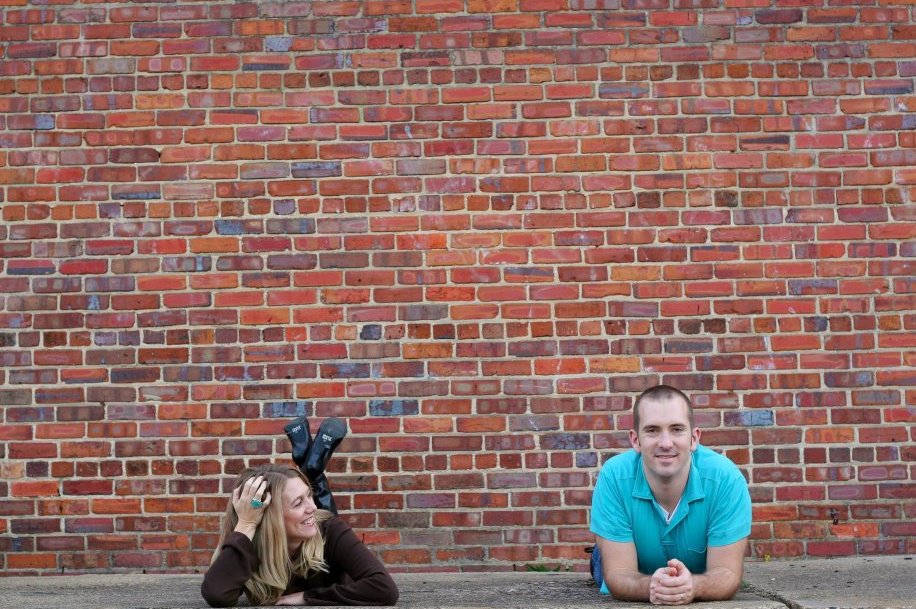
Farm Life in Chencha
On The Farm Update #1 - Welcome to the Farm
 We've drifted into the new year here in Ethiopia. The celebrations are over now, and we are settling into the pace of life in 2005. (That's not a typo - the Ethiopian calender is about 7.5 years behind the Western calender). The rains should stop this week, which signals a time of wait and watch as crops which were planted during krempt (the rainy season) grow to maturity. The end of the year is a busy time for farmers in Chencha. The month of Nahase (August for us) is the time to plow and plant a second round of crops. It is known as the month of “goom” (fog). The rains subside a bit, but, being perched at the top of a mountain, we are consumed by a heavy, misty fog off and on throughout each day as clouds drift by.
Nahase was a busy time on our little farm, known officially as “Children, Community Strengthening and Income Generation” project (or CCSIG) - even the acronym is hard to say. We simply call it Kota Ganate (KG), which means “Hidden Garden”, and that is what it is.
We've drifted into the new year here in Ethiopia. The celebrations are over now, and we are settling into the pace of life in 2005. (That's not a typo - the Ethiopian calender is about 7.5 years behind the Western calender). The rains should stop this week, which signals a time of wait and watch as crops which were planted during krempt (the rainy season) grow to maturity. The end of the year is a busy time for farmers in Chencha. The month of Nahase (August for us) is the time to plow and plant a second round of crops. It is known as the month of “goom” (fog). The rains subside a bit, but, being perched at the top of a mountain, we are consumed by a heavy, misty fog off and on throughout each day as clouds drift by.
Nahase was a busy time on our little farm, known officially as “Children, Community Strengthening and Income Generation” project (or CCSIG) - even the acronym is hard to say. We simply call it Kota Ganate (KG), which means “Hidden Garden”, and that is what it is.
When you turn off of the rutted, muddy road and enter the gates, you are welcomed by green grass, flowers, young apple seedlings and fertile beds of vegetables. Some days you may catch the community children playing soccer in our small field. The staff will offer you a seat and some tea in the sunshine just outside the office. As you wander through the site, you'll pass the apples to your right and the poultry compound to your left, with lots of noisy chickens inside clucking away.
On the way down the hill, you'll find my little house, where we love visits -partly for the visit, partly because it makes a good excuse to have a coffee ceremony. After my house are rows and rows of vegetables: potatoes, cabbage, garlic, onion, beets and carrots. Past those, on the far side of the property, you'll find women and children cutting the lush green hay to take home to their cows.
This is the first in a series of updates about our “Hidden Garden”. As we worked through the month of Nahase, I tried to capture everything on film so you can see for yourselves how far we've come.
I hope you've enjoyed this little tour of the farm. Stay tuned. In the coming weeks I will show you some of the different things we are working on.
Rewards Day!
A couple of weeks ago, we were invited to attend a very special celebration honoring the academic achievements of many of our beneficiaries. It was a Saturday morning, and, in addition to our beneficiaries, the Drop-in Center's compound was packed by the Onesimus staff, several teachers, and even some government officials. The half-way home kids put on a skit. We heard encouraging words from one of the local government officials and several of the Onesimus staff members. Soft drinks and special cultural bread were served, and gifts were given to the top academic achievers. Fifteen boys and girls ranked in the top 10 of their classes - not bad for a bunch of former street kids. Several of the students were first in their classes. Tamrat received special honors for actually being first from his entire section. Everyone had a good time at the celebration.
I hope that you enjoy the pictures below and will join us in celebrating the special achievements of this very special group of kids.
Is Your Door Open?
New Life: Bridges Welcome Silas Patch
Yesterday afternoon my family celebrated the birth of our third child, Silas Patch. Amidst the hustle and bustle of having a baby these days (nurses, doctors, mandatory parenting videos, tests and more tests, visitors, and of course sleeplessness) I actually found a few moments to pray over our new baby boy.




